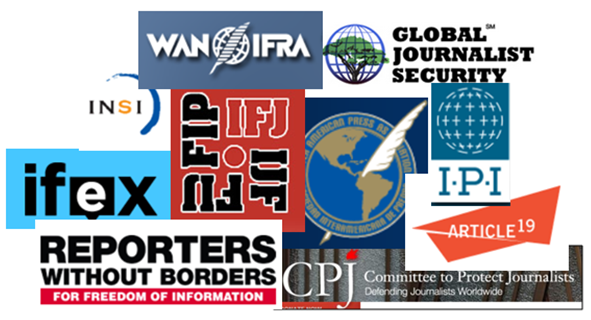

Image: Shutterstock, Thapana Onphalai
GIJN Launches Journalism Security Assessment Tool
Read this article in
Increasingly, journalists and their sources around the world are being hacked, doxxed, harassed, surveilled, and assaulted by story targets, criminal organizations, governments, and proxies acting on behalf of autocrats and oligarchs.
In response, GIJN — with generous support from the Ford Foundation — is proud to launch a first-of-its-kind safety evaluation guide for watchdog journalism groups at the 2021 Global Investigative Journalism Conference: the Journalism Security Assessment Tool (JSAT).
Adapted by safety experts at the Ford Foundation’s BUILD program from a cybersecurity tool they developed to protect NGOs, JSAT is a free, survey-based self-assessment tool that offers practical solutions tailored to each newsroom’s profile and vulnerabilities. The survey takes about an hour to complete, and is followed by an instant diagnosis of an organization’s digital and physical security and resilience.
Because attacks and breaches now come from every direction — from reporters’ digital identities to source communications, as well as the street outside — the risk mitigation recommendations that follow cover documentation, policy, emotional risk, training, travel, data, messaging, and physical security. The assessment is designed for real-world reporting needs, and includes threat models, user-friendly open source encryption tools, and “Why we recommend this” explainers.
JSAT is being launched at a #GIJC21 journalism security workshop, and is one of four major guides released during the online conference. Other guides cover organized crime, internal fact-checking, and a resource for building video units for smaller newsrooms.
“JSAT provides a holistic view on securing the journalist’s work,” says information security expert Runa Sandvik — a co-designer of the tool. “So instead of ‘just’ focusing on, say, physical security in a high-risk situation, the tool will also account for ways to protect data and communications.”
With online harassment on the rise — especially of women journalists and freelancers – and digital surveillance a new crisis area, Sandvik says journalists, in particular, need an accessible roadmap for improved safety at every level.
But the tool, she emphasizes, works best as a team solution.

JSAT provides a “holistic” view to journalism security, says Runa Sandvik, who co-designed the tool. Image: Courtesy of Sandvik
“We strongly encourage journalists to discuss the JSAT tool with their editors, IT, and security team,” says Sandvik. “There are plenty of tools out there that look at how an individual can improve their own security. The purpose of the JSAT tool is to ensure the organization can level up as well.”
“Big thanks to the Ford Foundation’s innovative BUILD program, which provided the expertise and support to make this happen,” notes David E. Kaplan, GIJN’s executive director. “This is a major contribution to building resilience into embattled independent media around the world.” The team at the Ford Foundation included Matt Hansen, Matt Mitchell, and Runa Sandvik, and, on GIJN’s side, Anne Koch and Emily O’Sullivan.









